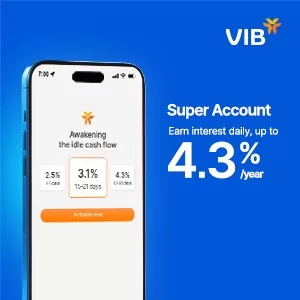Brands Social
Picastro: The Instagram Alternative for Astrophotographers

- Picastro aims to establish a site where astrophotographers can share and enjoy high-quality images without aggression, building a common global community.
- Thus, this platform fills the gap of social media, providing tools for astrophotography hobbyists, regardless of their skill level.
Picastro is an app for social media that is made for astrophotographers. The founder, Mr Tom McCrorie, is an amateur astrophotographer himself. Immersing in sharing cosmic images without engaging the distractions of mainstream platforms, it stands apart from Instagram, with Picastro supporting high-resolution uploads of up to 120MB for JPEG, PNG, and WEBP formats. The site has zero advertisements, and no bots manipulate AI content to permeate its atmosphere, thereby paying homage to true astrophotography.
From starry skies to deep-sky objects, astrophotographers get to present their art in all its detail. Why would Astro use platforms that somehow squeeze image quality? Picastro holds their captors to the very gaze that was instilled into them.
The Creation of Picastro
Kilmarnock, Scotland, Tom McCrorie set up Picastro in September 2024 after receiving a telescope as a birthday present. Annoyed by Instagram’s compression and ad-laden feeds, he devised this mobile-first app on iOS and Android so astrophotographers of all levels could share their high-res images, free from algorithmic interference.
Such is the experience of McCrorie, and at the same time, common: one posts a detailed celestial image only to have it degraded online. Picastro stops such degradation from being a factor, thus keeping the image intact, which then becomes an extremely practical option for astrophotographers. What could having a dedicated sharing platform with core functionalities for cosmic captures imply?
Core Features of Picastro
Picastro equips the astrophotographer with tools that cater to their need for sharing and community engagement:
- High-Resolution Uploads: Images up to the boundary of 120MB can be uploaded in JPEG, PNG, or WEBP formats without any loss of quality. TIFF is being considered.
- Super Detailed Metadata: Users can input much more than just the location where the photo was taken, such as camera settings, telescope setups, filter configuration, and also the guiding technology. For example, when a photo is uploaded with a 30-second exposure at ISO 1600 for a nebula shot, it might help one to learn more about the technique.
- StarCamps: Groups built around specific gear, celestial targets, or levels of experience. Beginners might join a smartphone astrophotography group, while experts may converse in deep-sky imaging forums.
- Community Voting: Photos get voted on by users with stars or trophies. Those photos that earn the highest votes get declared “Image of the Week” by the community and not an algorithm.
- Ad-Free Feed: No ads, no bots and no AI-generated images exist to ensure pristine authenticity.
With many of them, Picastro stands out as a very useful tool. So, how does practising in a StarCamp advance one with the finer points of astrophotography?
Instagram’s Challenges for Astrophotographers
Instagram often disappoints astrophotographers. Its compression reduces details, such as faint galaxy structures. Ads clutter feeds, and AI-generated images increasingly pose as authentic, confusing viewers. A 2025 X post noted Instagram’s algorithms prioritise engagement over quality, sidelining genuine work.
Picastro resolves these issues. It protects images from compression and theft, displaying them as captured. With 530 likes on its Facebook page, users praise its clean interface and uncompressed uploads. McCrorie designed Picastro to eliminate the “constant bombardment of advertising” found elsewhere.
Why share astrophotography on a platform that compromises quality? Picastro offers a focused alternative.
Connecting a Global Astrophotography Community
Astrophotography spans the globe, and Picastro unites its enthusiasts. Users from London to Mumbai can join StarCamps to discuss gear or techniques. For instance, an award-winning astrophotographer from India might share lunar imaging tips with a beginner in Scotland.
Threaded comments and direct messaging foster meaningful exchanges. Unlike Instagram’s chaotic comment sections, Picastro’s moderated community promotes constructive feedback. Users share stories of their first captures, like imaging the moon or a deep-sky object, and building a connection.
Subscription Options
Picastro uses a subscription model to maintain an ad-free environment. The options include:
- Curiosity Plan (Free): Up to 15 images, each under 15 MB. Voting is disabled, but it’s a good starting point.
- Paid Plan (~$5/month): A yearly subscription of £4/month (approximately $5) offers full access, including larger file sizes and voting capabilities.
A 10% discount is available via the code ‘SKIESANDTEL10’ through an associated blog, or a 15% discount may be offered through other promotional channels, as per available sources. This structure ensures accessibility for all skill levels.
Which plan suits an astrophotographer’s needs? The free option allows exploration, while the paid plan unlocks full features.
Practical Steps to Use Picastro
Joining Picastro is straightforward. Here’s how to make the most of it:
- Create a Profile: Add gear and experience details. Listing a Nikon D850 and a 14 mm lens can connect users with similar setups.
- Join StarCamps: Engage in groups for planetary imaging or wide-field nightscapes to learn techniques.
- Share Metadata: Include exposure time, ISO, and filters. Noting an H-alpha filter for a nebula shot can guide others.
- Vote Actively: Support peers by voting on images. Votes highlight top work, such as a detailed Pleiades capture.
- Test Formats: Use PNG for crisp details or WEBP for faster uploads, based on needs.
These steps help users leverage Picastro’s tools and community. What image would an astrophotographer share first?
Picastro’s Future Vision
Picastro, launched in September 2024, is growing rapidly. McCrorie aims for 500,000 subscribers in the first year, with a potential audience of millions. A tablet version is in development, and new features are planned to enhance the user experience.
The platform is exploring partnerships with camera and telescope brands, potentially integrating Picastro with telescope software for seamless image sharing. Initial funding from Interface supports its growth, with discussions ongoing for additional investment.
User Feedback on Picastro
Users commend Picastro’s focus on quality. One reviewer on the app’s website stated, “Spending time on astro images only to see them ruined by compression is frustrating. This app keeps them perfect.” Another gave five stars for the clean interface and equipment-sharing options.
Early users, like those sharing images of the Christmas Tree Cluster or M45, demonstrate Picastro’s ability to highlight talent across skill levels. These examples reflect its growing impact.
Picastro vs. Other Platforms
How does Picastro compare to other platforms for astrophotographers?
- Instagram: Offers broad reach but compresses images and prioritises ads. AI-generated content is a growing issue.
- AstroBin: Focuses on technical details and full-resolution uploads but lacks a mobile-first app. Suited for professionals.
- Stargazers Lounge: A text-based forum for technical discussions, less focused on visual sharing.
- Picastro: Combines high-resolution uploads, a mobile app, and a community-driven feed. No ads or algorithms make it ideal for visual storytelling.
Why Picastro Stands Out
Patience and precision go hand in hand in astrophotography. Picastro upholds the sanctity of the craft by providing an uncompressed and ad-free space for image display. With more than 530 users and counting, astrophotographers are building a global community on Picastro.
From beginners with cell phones to professionals with giant high-class telescopes, they all find a home at Picastro. Its tools, like StarCamps, support growth, while the ad-free feed keeps the focus on the work.
Getting Started with Picastro
Joining Picastro is simple. Download it from the Apple App Store or Google Play Store. Sign up for the free Curiosity Plan or the paid plan for full access. Share an image, like a starry nightscape or planetary shot. Join a StarCamp for a human connection. Vote for inspiring images, or add your comments to the discussions.
Picastro is a community for shared images rather than an alternative to Instagram for astrophotographers. It thrives on cosmic captures: with max-res uploading, useful tools, and contacts for world connect, it is meant for all enthusiasts.
A New Space for Astrophotography
Picastro changes the way astrophotographers present their work. It is built by an astrophotographer to address the limitations of current platforms. Premium uploading capabilities, along with StarCamps and an ad-free feed, make it the star of the show. Picastro promotes a growing community of enthusiasts in London and in other major hubs around the globe.
Download the app. Share a cosmic capture. Join a StarCamp. This is the place where astrophotography is allowed to shine, with tools and connections for all levels of experience. What magical moment will the next set of enthusiasts share?




















































